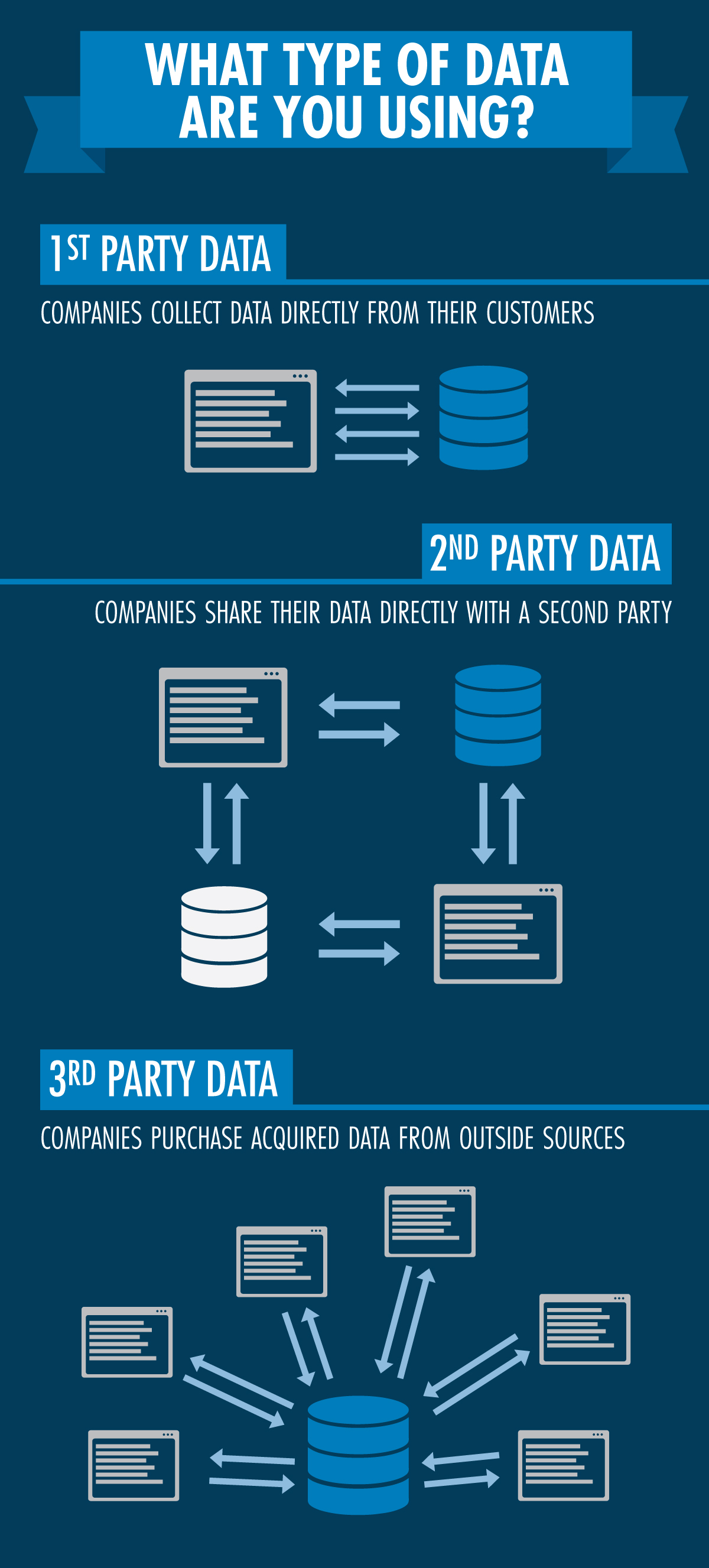
One of the biggest buzzwords in marketing today is data. This important information that is collected from consumers is vital to the growth of any business. Quality data can lead to targeted marketing campaigns and more qualified leads. From 1st party to 3rd party data, it’s important to know what type of data you are working with and where each comes from. This post is designed to help sort out some of the potential confusion by not only defining the three primary types of data, but also explaining the pros and cons of each.
1st Party Data
1st party data is data that you’ve collected. This can be information collected from your website, customer feedback, etc. Many marketers will tell you that this type of data is preferable over others because companies know exactly where it came from. In fact, 81% of senior level marketers said that 1st party data garners a higher return on investment than the rest. Additionally, 1st party data allows you to control the information you receive by asking the questions that you find valuable.
1st party data does not come without its own limitations. One of the biggest downsides to this type of information is that it limits your reach. As we mentioned, this information generally comes from your current consumer base, helping you reach out to those that have similar attributes to your current consumer, also referred to as a lookalike audience. However, because it may not include information on potential new consumer segments, it may limit your ability to branch out to a broader audience.
2nd Party Data
With 2nd party data, you are not collecting the data yourself, but instead using another company’s 1st party data. This is usually done through business partnerships that are beneficial for both sides. For example, Delta may share some of their consumer data with Disney. To Disney, this data is considered 2nd party data. Disney benefits by being able to target those flying to the area, while Delta can use Disney’s data to market to those planning a vacation that will likely need transportation. Both sides are benefiting from this exchange, allowing them to gain access to information that their own 1st party data could not provide.
The downside to 2nd party data is that it may not tell you all of the information that you would like, as it was collected for other purposes. In the example above, Disney may not have much data on how their guests arrive at their parks. Although Delta still receives valuable information on consumers planning a vacation, they may have to do some work in order to maximize the data that they receive.
Companies seeking 2nd party data should consider the type of company they would like to try and partner with. Analyze your needs and consider how it will benefit all companies involved. It is important to understand that the key to quality 2nd party data is transparency, so ensuring the compatibility between your company and any potential partner is key.
3rd Party Data
This is the broadest type of data available. 3rd party data is essentially data collected by an organization that doesn’t have a direct relationship to your own. 3rd party data providers, such as Nielsen and Bluekai, generally work with several different companies across various platforms to collect a wide array of data. The provider will then aggregate all of the collected data and chop it up into different segments that companies are looking for. Although this type of data can be compiled over the course of a few days, it can be very expensive. It is also hard to tell where 3rd party data came from and how accurate it is. The data you receive could have been collected 2 months ago or 2 years ago.




